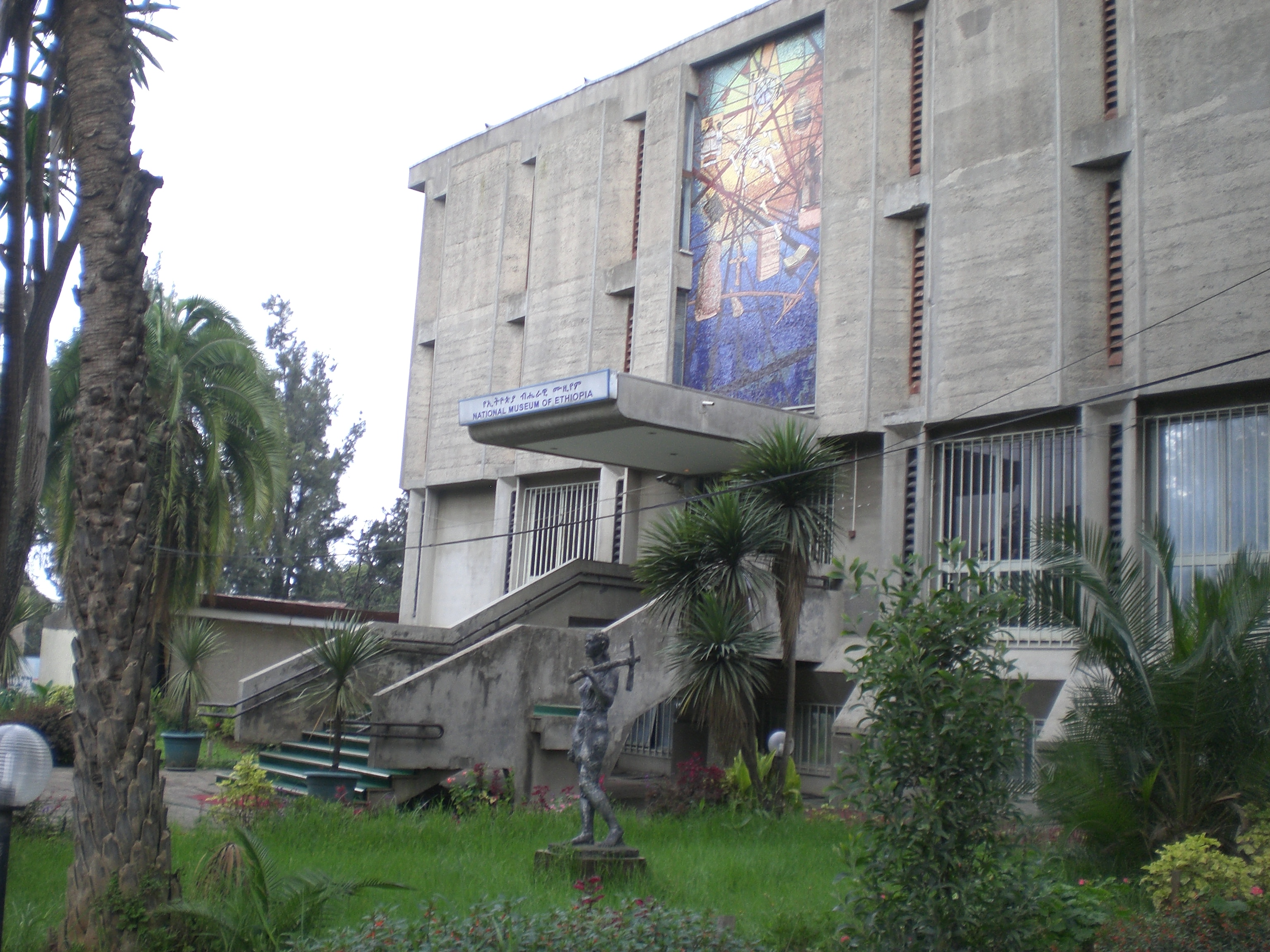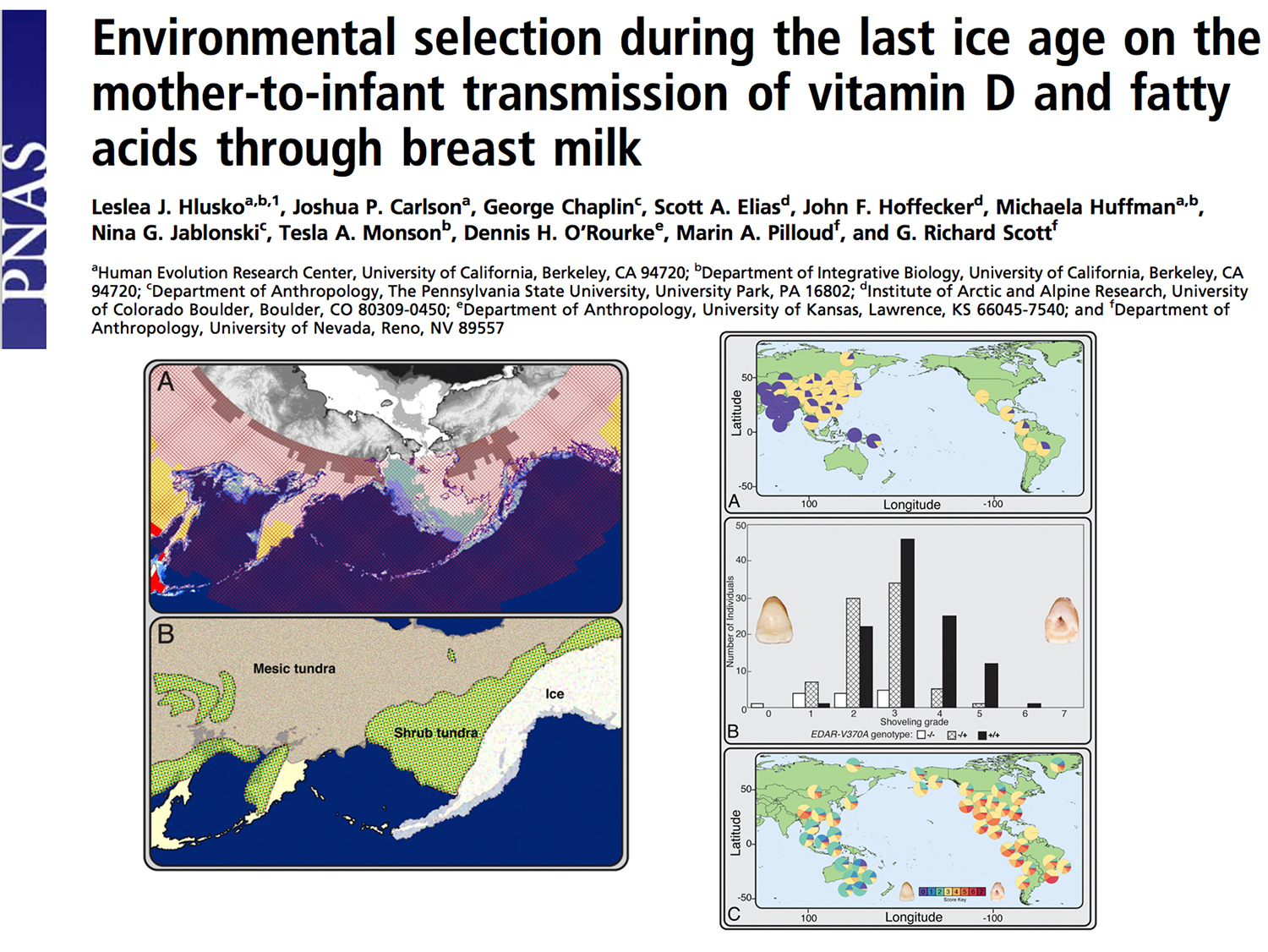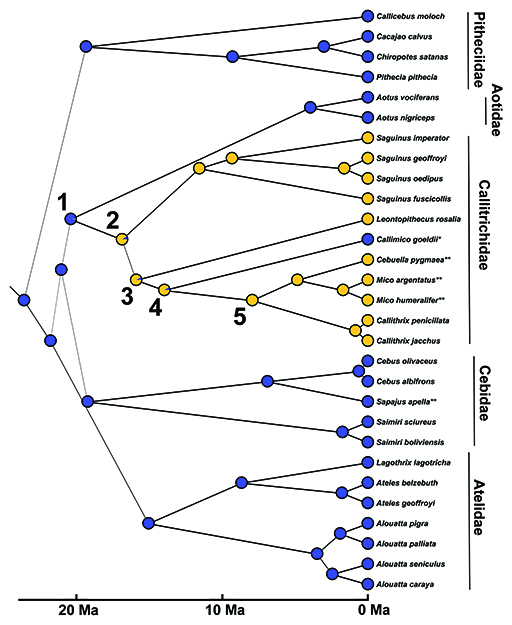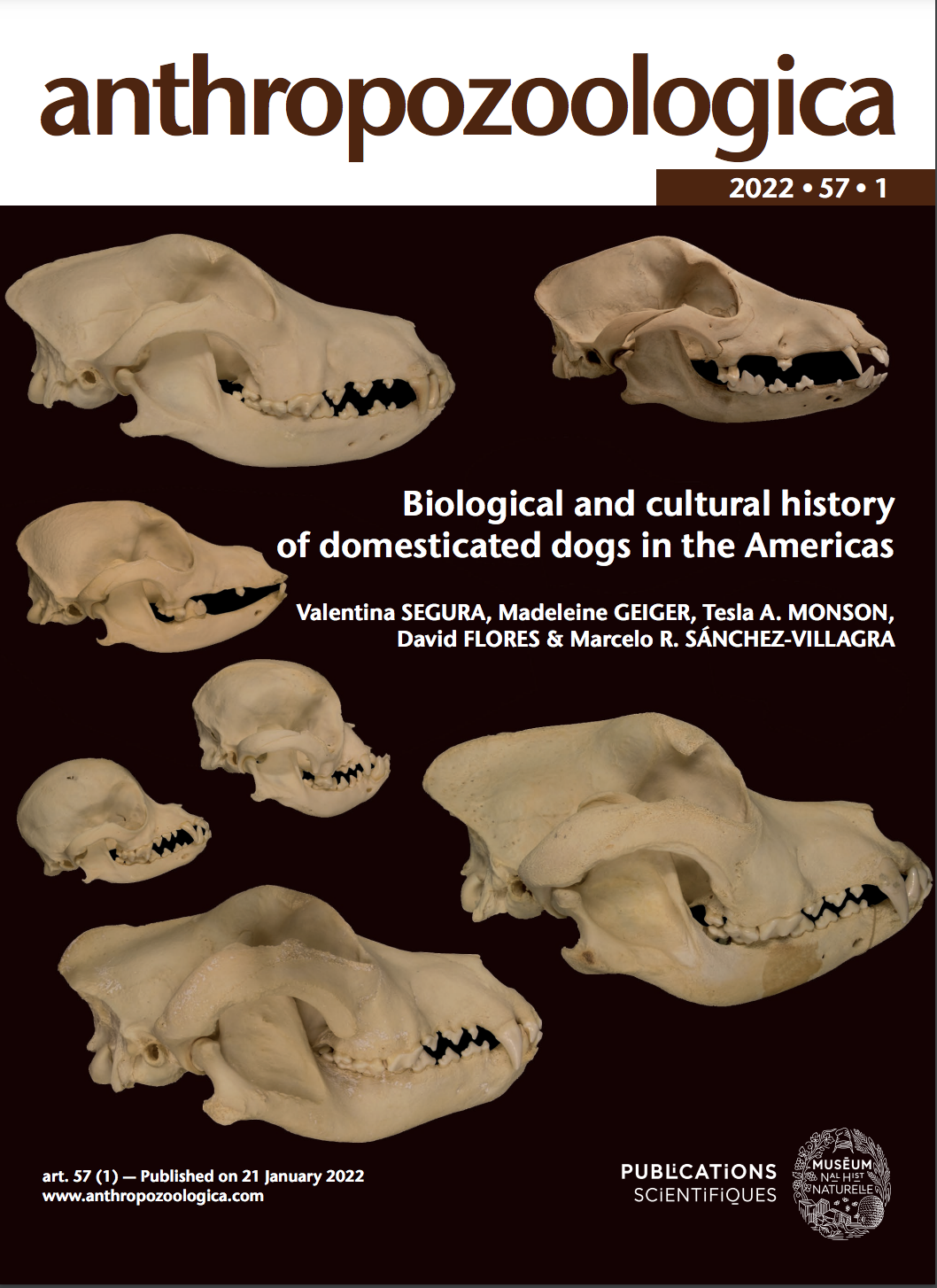Development of the skeletal system, and the evolution of life history and behavior
My lab studies primate evolution, life history and behavior, and growth and development of the skeletal system. My work draws on my background in anthropology as well as my more recent training in paleontology, ecology, and evolution to explore mammalian biological variation in a comparative phylogenetic framework. Research in my lab also seeks to better understand the genetic architecture of morphological patterning, the evolution of adaptive traits, and species variation in the fossil record.
My research uses collections-based and non-destructive lab-based approaches that combine neontology and paleontology and work at the interdisciplinary junctions of anthropology, organismal and evolutionary biology. I use a range of comparative morphological and evolutionary methods including 2-dimensional and 3-dimensional morphometrics, high-resolution computed tomography imaging, comparative phylogenetics, and population modelling. Through my work, I currently aim to address three general questions:
- How does the primate skeletal system grow and develop?
- How does morphological variation in the skeletal system affect the evolution of human life history and behavior?
- How do life history and behavior influence the evolution of the skeletal system?
Projects:

Evolution of encephalization and human pregnancy
We have just begun a large-scale interdisciplinary project on the evolution of human life history. Our work focuses on the intersection between pregnancy and fetal growth rates, body and brain size, and development of the dentition. Our first publication was published in the Proceedings of the National Academy of Sciences in October 2022. This work is an international collaboration between researchers at Western Washington University, the Berkeley Geochronology Center, and CENIEH in Spain.
Publications: Monson TA, Weitz AP, Brasil MF, Hlusko LJ. 2022. Teeth, prenatal growth rates, and the evolution of human-like pregnancy in later Homo. Proceedings of the National Academy of Sciences. 119 (41) e2200689119
Primate evolution in Africa
I am part of a research group investigating Old World monkey (Cercopithecidae) evolution in Africa. Building out of our work on Cercopithecidae evolution in South Africa, I am currently a member of

the Middle Awash Research team. As part of this research team, I am describing a large collection of Plio-Pleistocene monkey remains from Ethiopia, held at the National Museum in Addis Ababa, Ethiopia. Related to this topic, I am also researching the evolution of dental proportions in primates, as well as the evolution of brain size, orbital shape, and cranial shape in primates more broadly.
We recently published 3 papers simultaneously, describing nearly 1,000 new monkey fossils from the Middle Awash research area of Ethiopia. Our papers earned the cover of the American Journal of Biological Anthropology. You can read the papers here:
You can read the papers here:
Brasil et al. (2023a), Brasil et al. (2023b), Taylor et al. (2023)
Craniofacial variation in the primate fossil record (evolution of primates in Africa)
My earlier work on paleontology collections accessioned by the UC Africa Expedition of 1947-1948 fueled an interest in non-hominid primate evolution in Africa. In 2015 I visited

museum collections and excavation sites in Johannesburg and Pretoria, South Africa, collecting data on cranial variation in Plio-Pleistocene South African primates (Cercopithecidae, Old World monkeys). In 2017, we published a paper in Palaeontologia Electronica on craniofacial variation and taxonomic diversity in the South African monkey fossil record highlighting the relatively limited cranial variation in these fossils relative to extant species and suggesting the taxonomy may be overinflated in this extinct primate community. We have ongoing work on the taxonomy of these fossils, and the on the evolution of life history in African Cercopithecidae.
Monson TA, Brasil MF, Hlusko LJ. 2015. Report on materials from the southern branch of the UC Africa Expedition with a description of new fossil localities. PaleoBios. 32(1), 1-17.
Applications of machine learning to paleoanthropology
We recently published our working using machine learning to classify extant apes and interpret the dental morphology of the chimpanzee-human last common ancestor at PaleoBios, the official publication of the University of California Museum of Paleontology. This work applied machine learning to the question of whether chimpanzees are the best extant homologue for the last common ancestor of humans and chimps, as is currently accepted by many researchers. Comparing three types of dental data, we found that the dental proportions of Miocene apes are much more similar to extant gorillas than to chimpanzees, and we suggest that gorillas make better models for understanding the evolution of relative sizes of the teeth in humans than do chimpanzees. Release of this publication was accompanied by press at Inverse.com, News.com.au, and an interview for Up All Night, the BBC radio program hosted by Rhod Sharpe.

Monson TA, Armitage DW, Hlusko LJ. 2018. Using machine learning to classify extant apes and interpret the dental morphology of the chimpanzee-human last common ancestor. PaleoBios. 35:1-20.
Population dynamics, natural selection and dental variation in pre-Industrial modern humans

During my postdoctoral fellowship at the University of Zürich, I was working on a project investigating human population movement and dental variation using molecular anthropology and population modelling. Published in PNAS, this project tested for neutral evolution of internal dental anatomy. Since tooth anatomy evolves neutrally, it can be used to reconstruct past population structure.
Monson TA, Fecker D., Scherrer M. 2020. Neutral evolution of human enamel-dentine junction morphology. Proceedings of the National Academy of Sciences 117.42 (2020): 26183-26189.
Maternal:infant constraint

Last year, our work on dental variation and selection on breastfeeding and maternal:infant constraint was published in the Proceedings of the National Academy of Sciences (Hlusko et al. 2018). This collaborative work compared dental variation with genetic variation in the EDAR gene and the FADS gene cluster, presenting evidence for natural selection on a human population living in Beringia during the last ice age. This work has implications for the evolution of reproductive biology and reproductive behaviors, the peopling of the New World, and evolution of the dentition. Release of this publication was accompanied by press at Science Magazine.
Hlusko LJ, Carlson J, Chaplin G, Elias SA, Hoffecker JF, Huffman M, Jablonski NG, Monson TA, O’Rourke DH, Pilloud MA, Scott GR. (2018). Environmental selection during the last ice age on the mother-to-infant transmission of vitamin D and fatty acids through breast milk. Proceedings of the National Academy of Sciences.

Craniodental constraint, prenatal growth rates, and twinning
Expanding from my work mentoring an undergraduate student at UC Berkeley, this project investigates cranial morphology, prenatal growth rates, and dental development. Humans have reduced third molars and a high incidence of agenesis, or complete lack of development, of these teeth. Other anthropoid primates have also undergone evolutionary reduction of third molars, with some species (family Callitrichidae) having lost the third molars completely. This project looks at pre- and postnatal growth rates in primates to better understand dental growth and development.
Monson TA, Coleman JL, Hlusko LJ. 2019. Craniodental allometry, prenatal growth rates, and the evolutionary loss of the third molars in New World monkeys. The Anatomical Record. 302(8):1419-1433.
Domestication of dogs in the Americas  I have been working alongside researchers at the University of Zurich and the Consejo Nacional de Investigaciones Científicas y Técnicas in Argentina to investigate the history of dog domestication in the Americas. As part of this project, we are also investigating the history of non-dog caniddomestication in the Americas (primarily South America). This large-scale international collaboration involves historical, anthropological, and biological research and was recently published by the Muséum national d’Histoire naturelle Science Press. I am just beginning a new project on the biological and phylogenetics of the Coast Salish dog.
I have been working alongside researchers at the University of Zurich and the Consejo Nacional de Investigaciones Científicas y Técnicas in Argentina to investigate the history of dog domestication in the Americas. As part of this project, we are also investigating the history of non-dog caniddomestication in the Americas (primarily South America). This large-scale international collaboration involves historical, anthropological, and biological research and was recently published by the Muséum national d’Histoire naturelle Science Press. I am just beginning a new project on the biological and phylogenetics of the Coast Salish dog.
Segura V, Geiger M. Monson TA., Flores D, Sánchez-Villagra. 2022. Biological and cultural history of domesticated dogs in the Americas. Anthropozoologica 57(1).
Ontogeny of dental eruption
My dissertation at the University of California Berkeley examined the evolution of dental eruption sequence, placing humans within the taxonomic and evolutionary context of other eutherian mammals. The late eruption of the third molar in humans, well after reproductive maturity, is not only a long-standing question of significant research interest, but also contributes to issues in modern human health. Surgical extraction of the third molars (known as the wisdom teeth) accounts for billions of dollars of health bills annually in the United States, with many cases leading to temporary and even permanent nerve damage and paralysis in the face. My dissertation worked to understand the factors contributing to late eruption of the third molar in humans, assessing the impact of phylogeny and life history on patterns of dental eruption sequence and finding results that refute Schultz’s Rule of dental eruption. Half of my dissertation is published in the Journal of Mammalian Evolution (Monson and Hlusko 2018), and the second half is in press at the American Journal of Physical Anthropology (Monson and Hlusko 2018).


Monson TA, Hlusko LJ. 2018. The evolution of dental eruption sequence in artiodactyls. Journal of Mammalian Evolution. 25:15-26. doi:10.1007/s10914-016-9362-9.
Monson TA, Hlusko LJ. 2018. Breaking the rules: phylogeny not life history explains dental eruption sequence in primates. American Journal of Physical Anthropology.167(2):217-233.
Genetic patterning mechanisms and the evolution of the dentition
Our earlier work identified two ratios (MMC and PMM) that are the morphological outputs of genetic mechanisms that pattern the dentition (Hlusko et al. 2016). These ratios are heritable, vary between primate taxa, and are independent of body size. We are now working to characterize MMC and PMM variation in mammals more generally. These projects vary from a broad taxonomic investigation of dental proportions in Boreoeutheria (Monson et al. 2019) and Euarchontoglires (Monson et al., in prep) to taxon-focused investigations of dental variation in extant (Zuercher et al. in revision) and fossil clades (Brasil et al. in revision). Publication of this work was accompanied by press at Science Daily.

Hlusko LJ, Schmitt CA, Monson TA, Brasil MF, Mahaney MC. 2016.The integration of quantitative genetics, paleontology, and neontology reveals genetic underpinnings of primate dental evolution. Proceedings of the National Academy of Sciences. 133(33):9262-9267.
Our newest paper on the evolution of dental proportions in mammals was just released in Ecology and Evolution. The study focused on mammals in Boreoeutheria, a clade that spans a wide range of dietary, behavioral, and ecological adaptations and can be found on every major continent as well as in all major oceans: Euarchontoglires (e.g., primates and rodents) and Laurasiatheria (e.g., ungulates, carnivorans, bats, and hedgehogs). From this extensive sample, the authors tested a series of hypotheses about associations between dental proportions and phylogenetic relatedness, diet, and life history in mammals. The study also looked at fossils to investigate how dental features have changed over the last 60 million years. The paleontological evidence further reiterates that dental proportions change more slowly than dietary specialization. This is exemplified in the study by polar bears which have a carnivorous diet but teeth that are very similar to their omnivorous relatives like the brown bear. These results have significant implications for our understanding of how teeth develop and evolve, and how mammals exploit such a wide range of diets in the modern world.

- Monson et al. (2019) Ecology and Evolution. https://doi.org/10.1002/ece3.5309
My MA work investigated the distribution of dental morphology across Cercopithecidae focusing on a discrete cusp of the maxillary molars. This was my first foray into the world of dental morphological evolution, and I was hooked!

Monson TA, Hlusko LJ. 2014. Identification of a derived dental trait in the papionini relative to other old world monkeys. American Journal of Physical Anthropology.155(3):422-429.

Evolution of human limb proportions and stature
We recently completed a project investigating allometric variation in modern humans and the relationship between body proportions and elite athletic success. This was one of the first studies to investigate body proportions in non-clinical individuals of extremely tall stature. Additionally, this work highlights the relationship between arm span (also known as wingspan) and stature, and elite athletic success in NBA basketball players and MMA fighters. Release of this publication was accompanied by press at Inverse, YahooSports, and University of California.
Monson TA, Brasil MF, Hlusko LJ. 2018. Allometric variation in modern humans and the relationship between body proportions and elite athletic success. Journal of Sport of Anthropology and Physical Education. 3:3-8.
My research paradigm
- Humans vary morphologically
- Natural selection acts on variation
- Genetic and developmental pleiotropy links variation in the skeletal system with variation in other phenotypes and behaviors
- Understanding how phenotypes vary in living and fossil populations will help us understand how morphological variation evolved
My research methods
My research incorporates
- 2-dimensional and 3-dimensional morphometrics exploring shape and size changes in extant and fossil populations
- Comparative phylogenetic analyses of phenotypic variation
- Population modeling and molecular anthropology – comparison of phenotypes with neutral genetic variation
My research spans biological anthropology, organismal biology, and paleontology.
